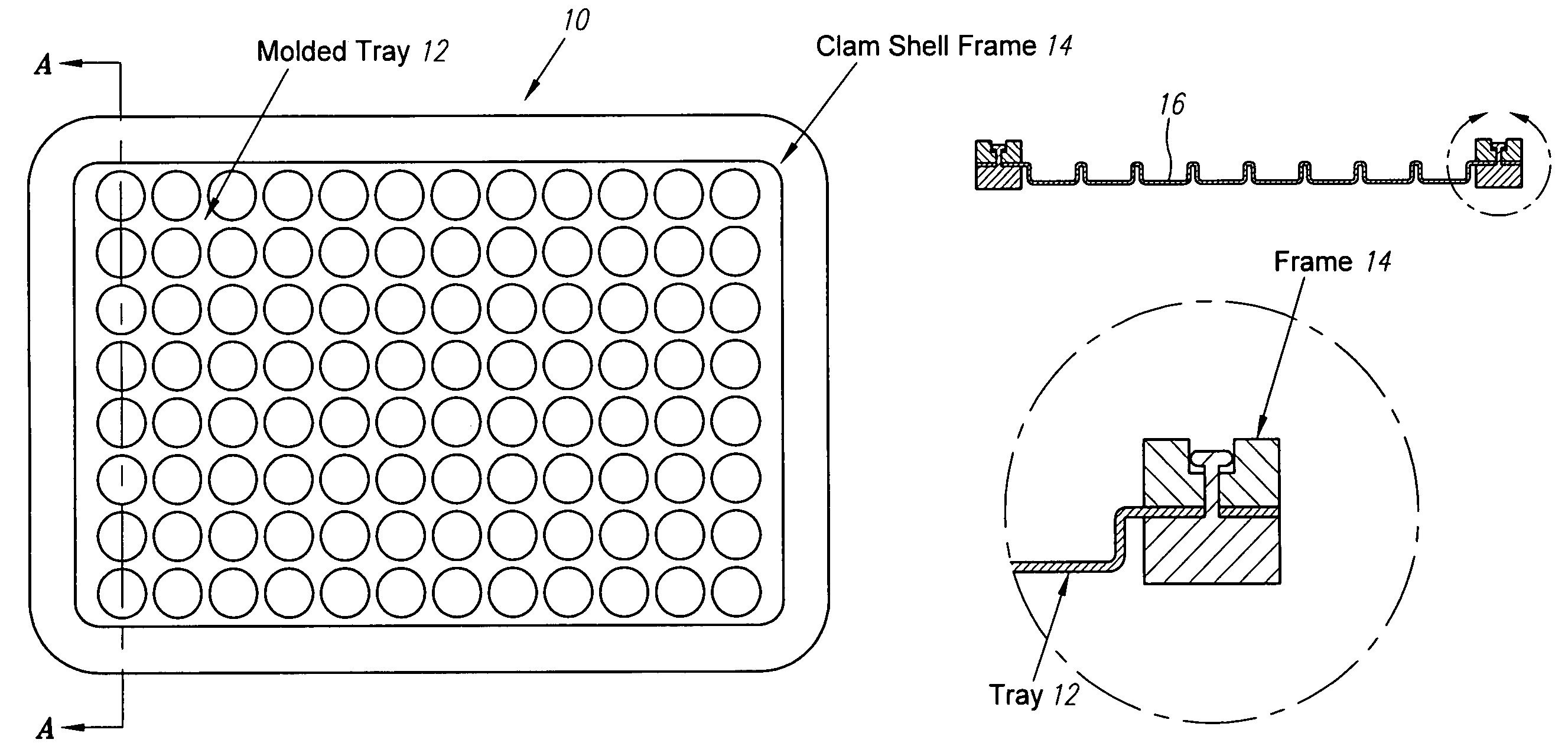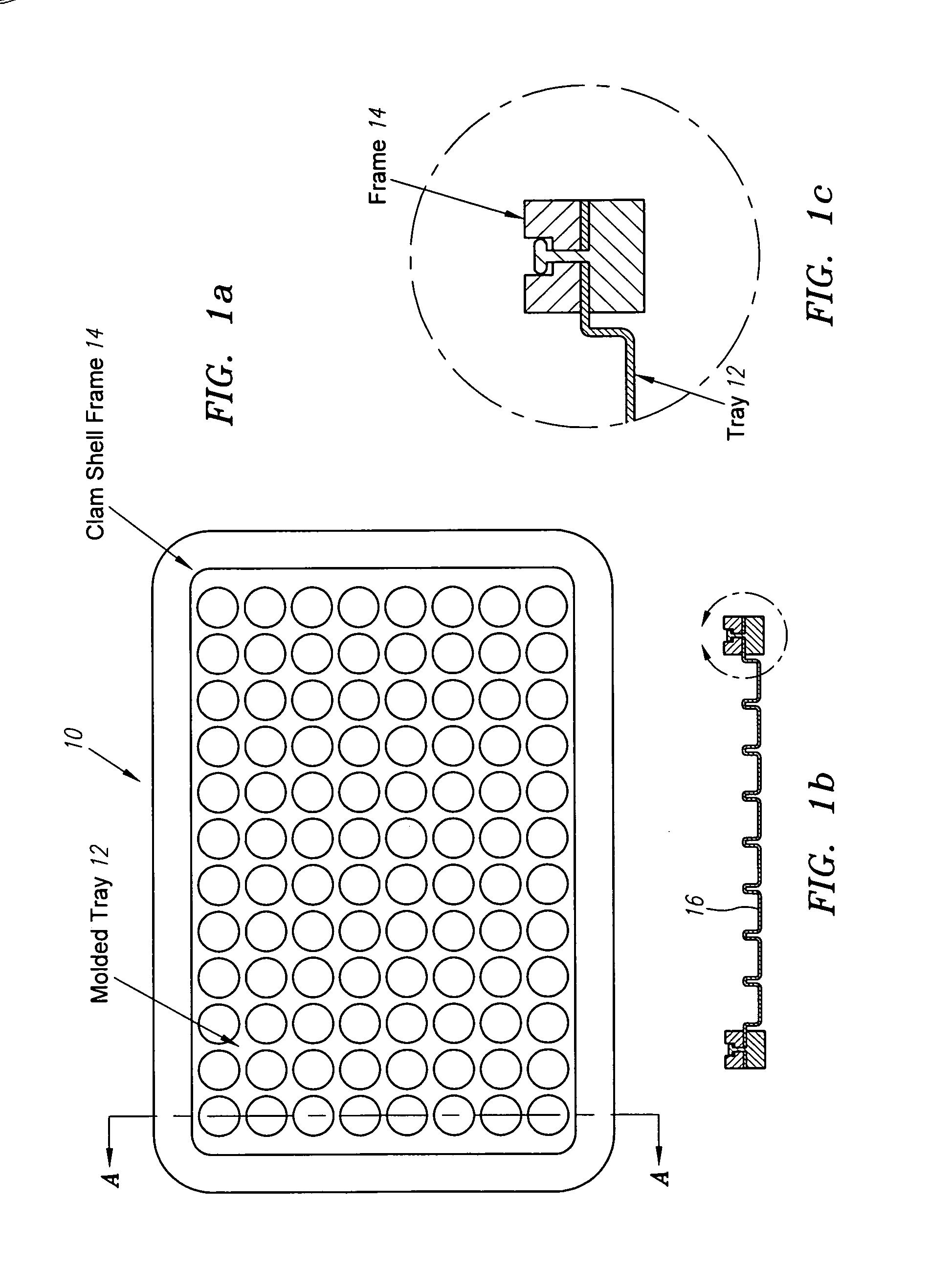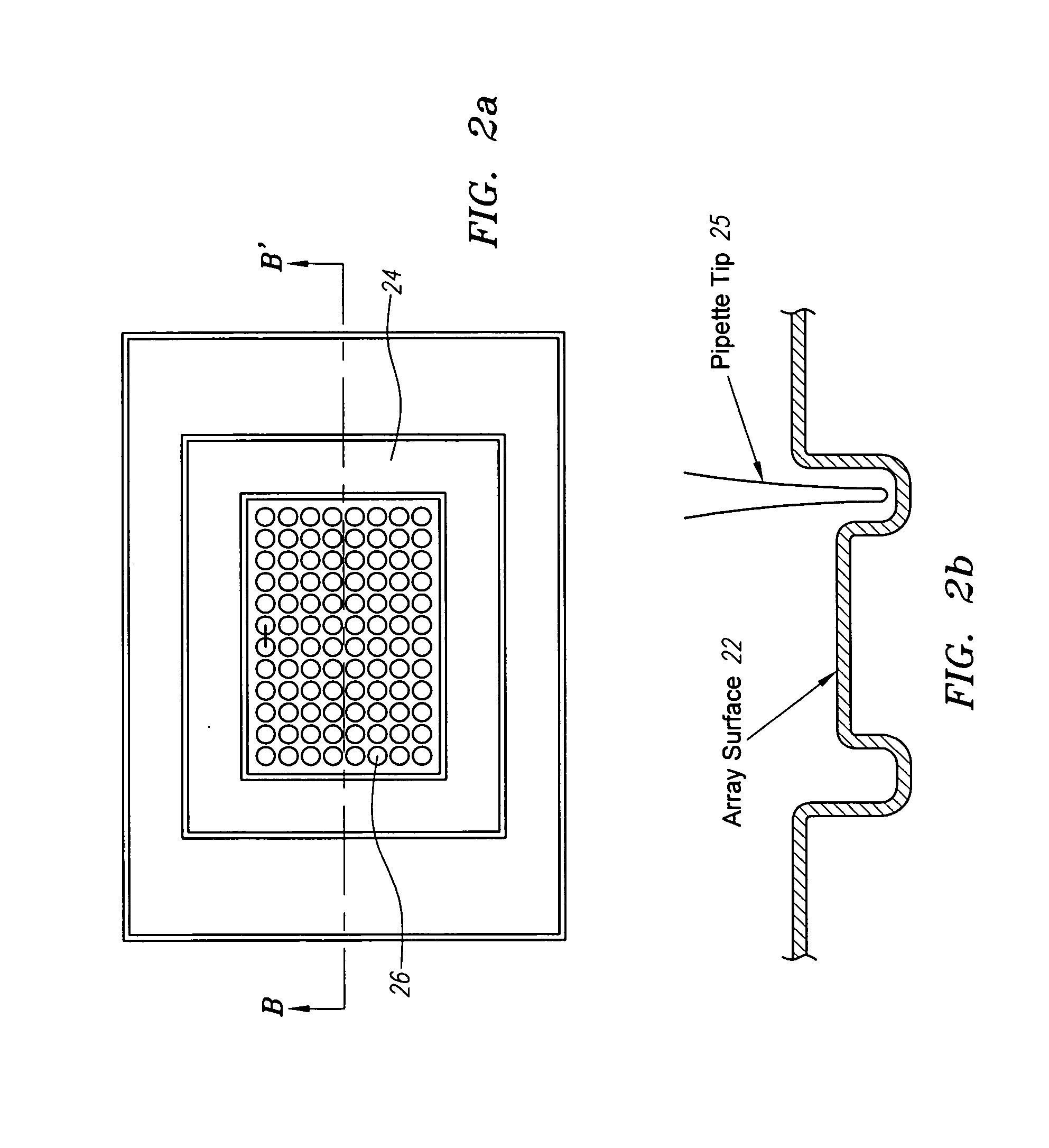Method and apparatus for processing biomolecule arrays
a biomolecule array and array technology, applied in the field of biomolecule array devices and apparatuses, can solve the problems of poor data quality and reproducibility, low throughput, and difficult reading of arrays in conventional microwells without expensive equipment, and achieve the effect of high data quality
- Summary
- Abstract
- Description
- Claims
- Application Information
AI Technical Summary
Benefits of technology
Problems solved by technology
Method used
Image
Examples
Embodiment Construction
[0029]An array-of-arrays microplate (“A2 plate”) assay system according to the present invention employs an A2 plate in conjunction with devices for microarray printing, liquid handling, hybridization and other processes, and necessary fixture apparatus for adapting the A2 plate to the above devices. The A2 plate is a device comprised of multiple wells, where the wells are discrete areas separated by barriers such as walls, hydrophobic patches, troughs, gaskets or pedestals, etc. that restrict fluid cross-flow between the discrete areas. Within each well may be formed an array of a immobilized elements, where an element is defined as a discrete, physical location of biorecognition materials. The number of elements in an array may be from 1 to 1536 or more, and preferably 16 to 400. The size of the arrays may be the same or different in different wells. The elements in each array may contain the same or different biorecognition materials.
[0030]Biorecognition materials generally refer...
PUM
 Login to View More
Login to View More Abstract
Description
Claims
Application Information
 Login to View More
Login to View More - R&D
- Intellectual Property
- Life Sciences
- Materials
- Tech Scout
- Unparalleled Data Quality
- Higher Quality Content
- 60% Fewer Hallucinations
Browse by: Latest US Patents, China's latest patents, Technical Efficacy Thesaurus, Application Domain, Technology Topic, Popular Technical Reports.
© 2025 PatSnap. All rights reserved.Legal|Privacy policy|Modern Slavery Act Transparency Statement|Sitemap|About US| Contact US: help@patsnap.com



